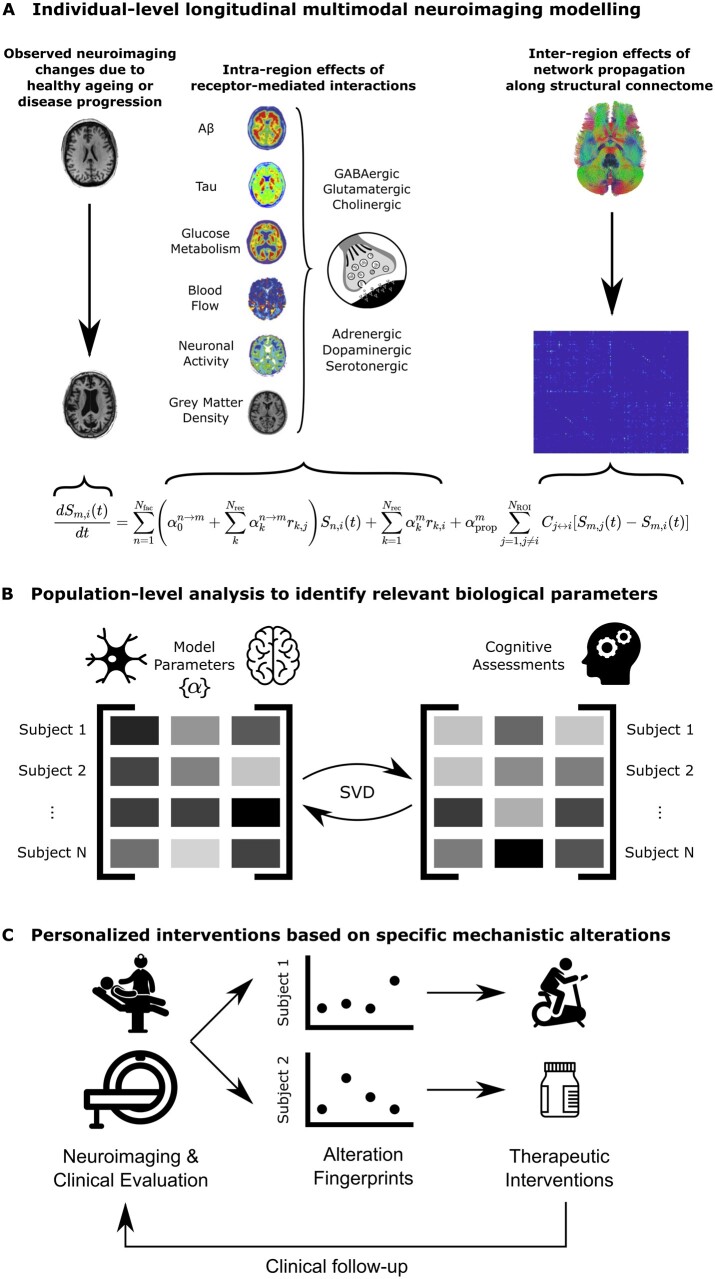Figure 1.
Neurotransmitter receptor-enriched multifactorial causal modelling. (A) For each subject with longitudinal neuroimaging data, changes between subsequent samples in each neuroimaging modality are decomposed into local synergistic effects due to (i) the direct influence of all neuroimaging-quantified biological factors; (ii) receptor density distributions; and (iii) multi-scale receptor–imaging interactions; and (iv) global network-mediated intra-brain propagation. Combining this data across (nROI = 88) brain regions and multiple neuroimaging samples results in a multivariate regression problem to identify the subject-specific parameters {α}. (B) At a group level, these personalized model parameters are then compared to subjects’ cognitive assessments (specifically, the rates of decline for seven composite cognitive scores described in the ‘Cognitive scores’ section) using a singular value decomposition (SVD) procedure on the cross-covariance matrix, to identify multi-scale receptor-neuroimaging interactions that are robustly correlated with the severity of cognitive symptoms in Alzheimer’s disease (outlined in the ‘Biological parameters and relationship with cognition’ section). (C) In the context of personalized applications, inter-subject variability in receptor–imaging interactions can be used as clinical ‘fingerprints’ of molecular alterations representing different disease mechanisms. Patients can then receive individually tailored treatment plans to address their underlying aetiology, based on their specific fingerprints. For example, patients with greater vascular alterations may benefit more from lifestyle interventions such as physical exercise, whereas patients with greater receptor alterations may require neurotransmitter-based medication (depending on the most affected receptor). Furthermore, treatment plans can be continually adjusted with follow-up visits.

